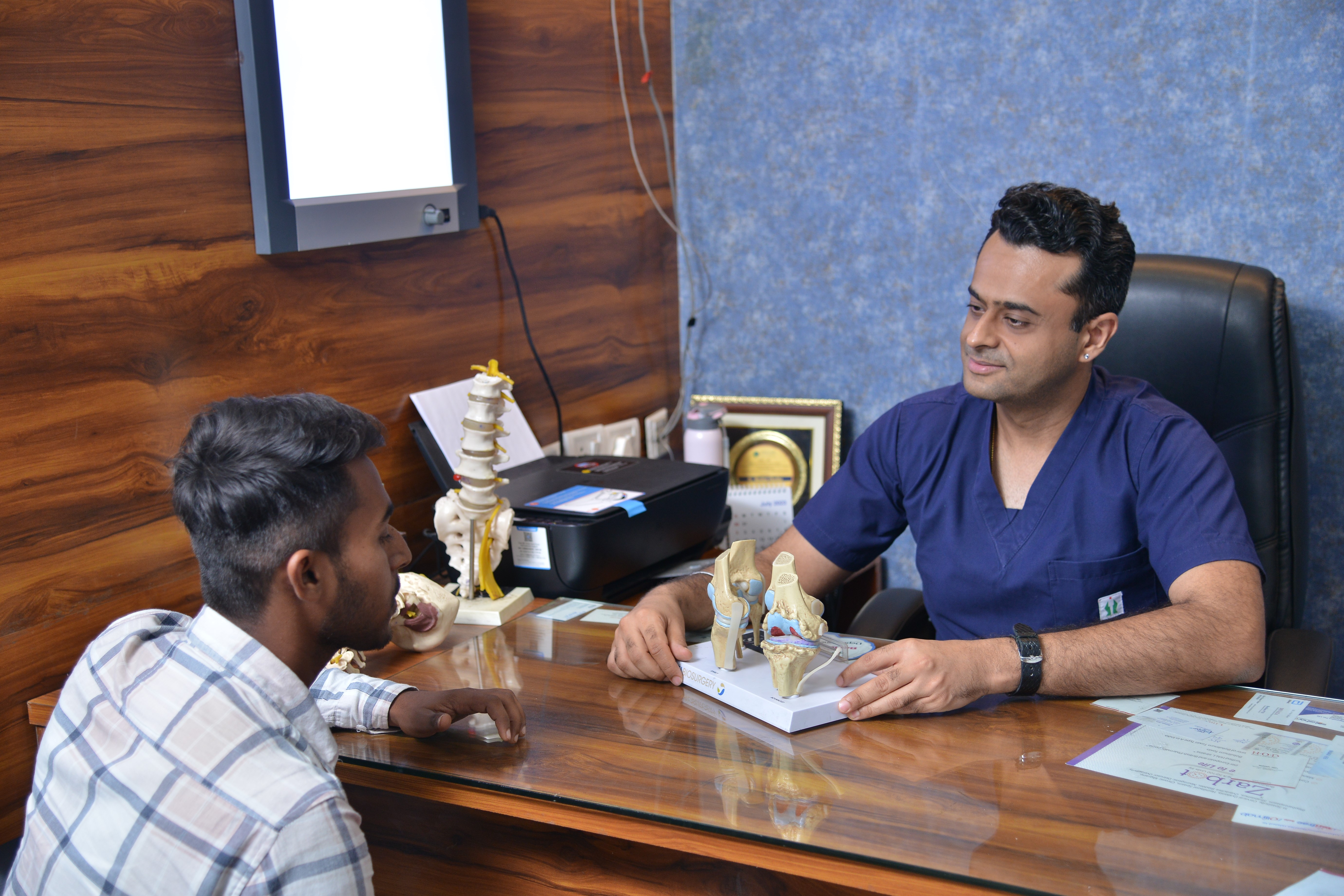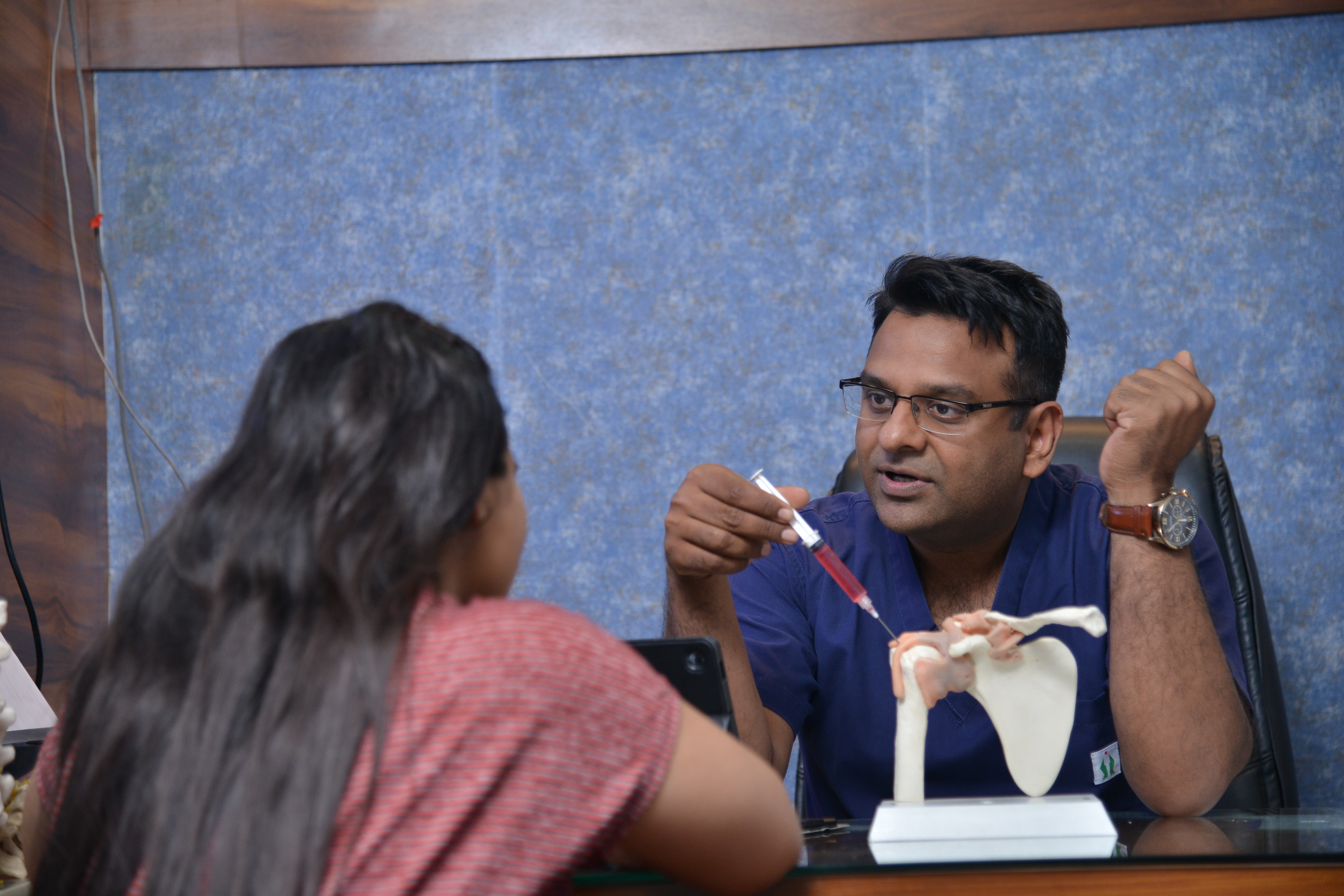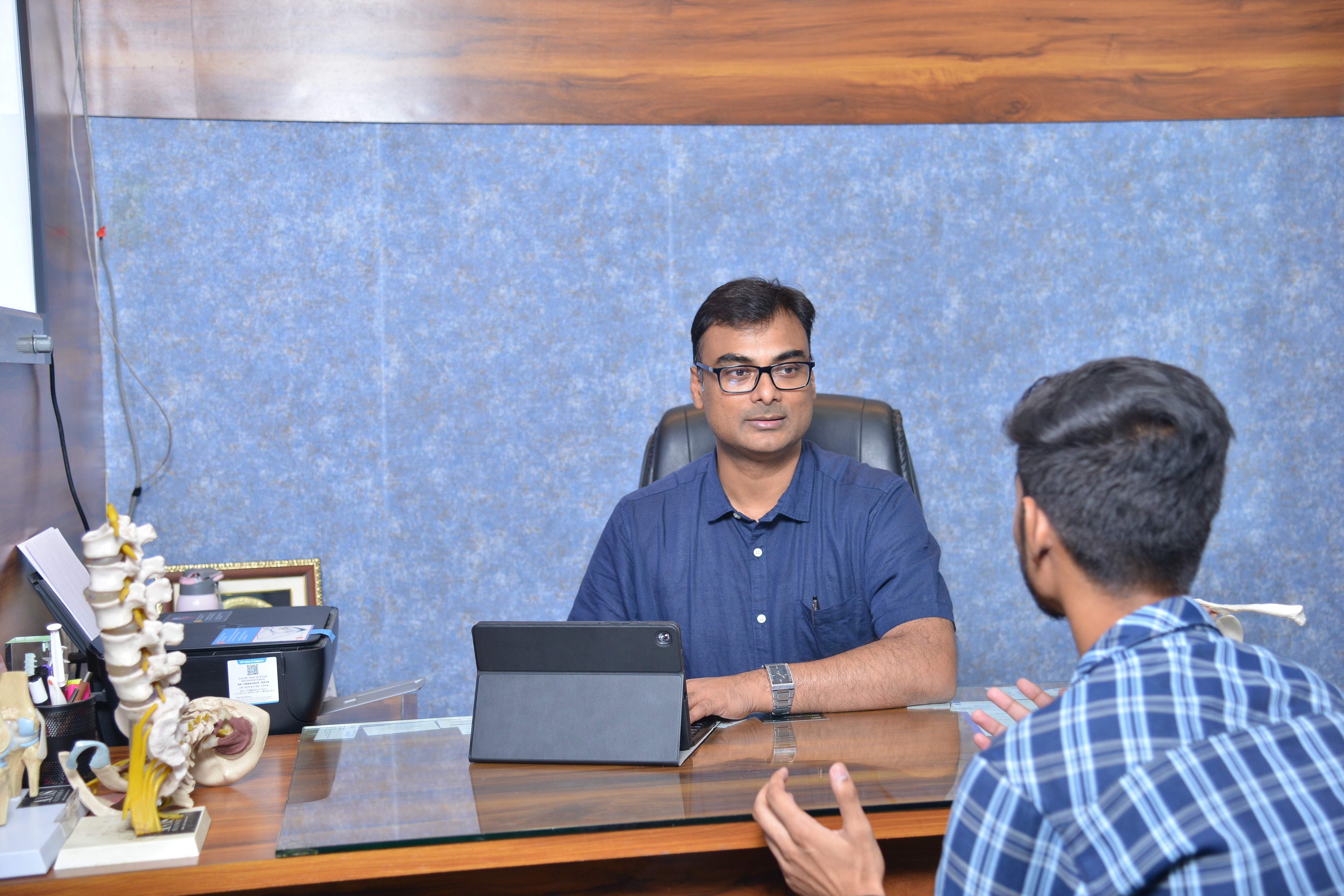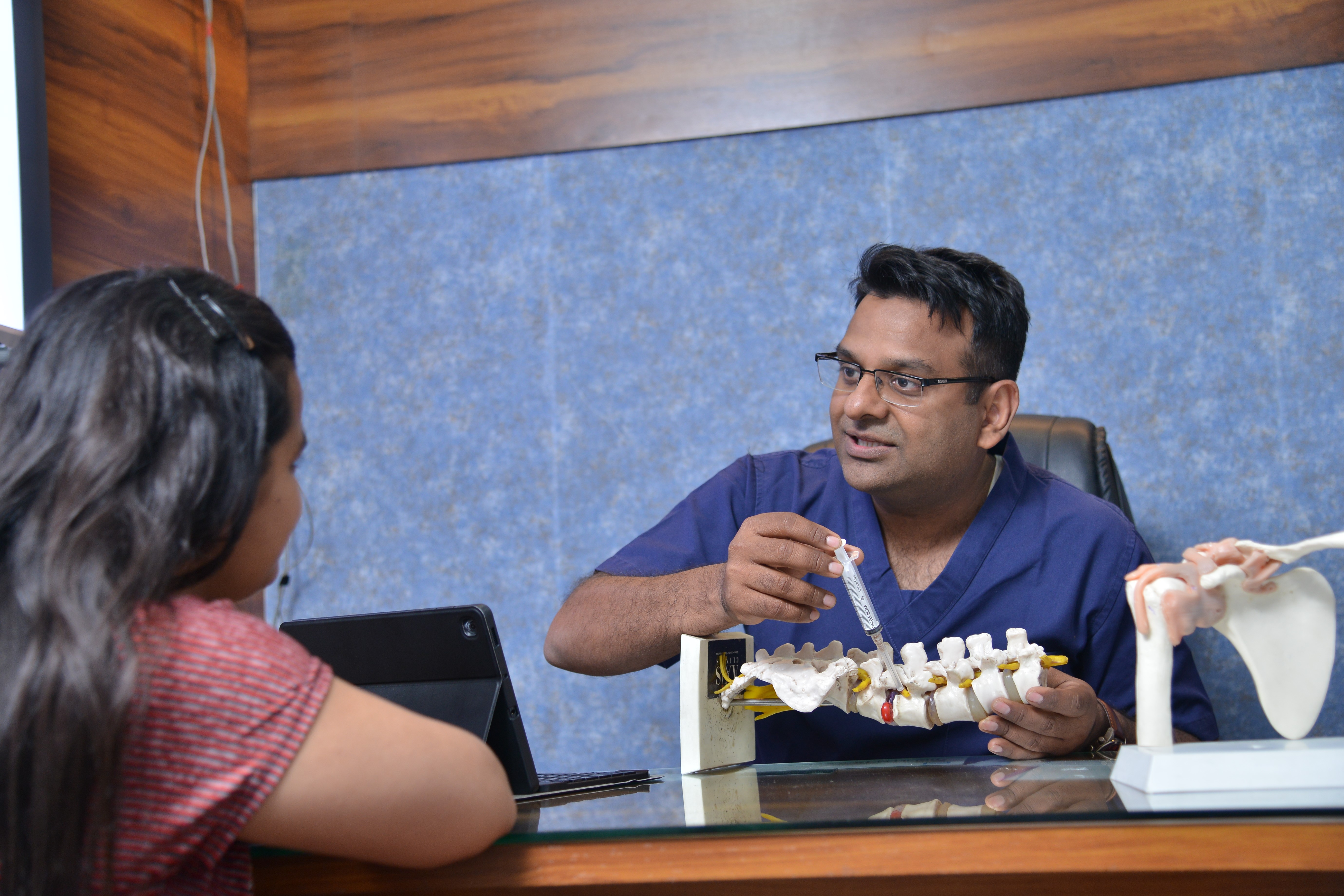Regenerative SD BMCI (Bone marrow concentrate Intervention) therapy has great potential in tissue regeneration and repair for various forms of musculoskeletal injuries and arthritis including sports injuries. Now, patients in India have the opportunity of receiving these cutting-edge procedures with better results.
What source do MNC cells come from?Acquired from bone marrow, adipose tissue, synovium and peripheral blood. These can be either concentrated or expanded and injected articularly into joints or tendons. The best site to aspirate is your pelvic bone area, iliac crest under local anaesthetic which is pain free. Q: How is the procedure performed? A: Needle is injected to carefully extract bone marrow usually from the iliac crest. A sufficient amount collected, the bone marrow aspirate is concentrated to isolate the MNC at our state of art lab and under goes rigrous check before injecting.
Using the Axis ACT system, which employs multiple guided imaging techniques and procedures to provide the best cell adhesion to injured locationsThe patient will experience pain alleviation and a speedier recovery during the next 8 to 12 weeks as a result of these cells' stimulation of repair and regeneration at the site.
Numerous problems affecting the hip, knee, arm, shoulder, lower leg, and foot are treated using BMAC MNC Cells. Your doctor is the best source for a comprehensive list. SD BMC cell therapy is also effective for the following ailments: • Recent muscular strains and tears Ligament injuries, such as those to the medial or lateral collateral ligament—MCL/LCL, include chronic tendinopathies (tennis elbow, Achilles tendon, patellar tendon, and rotator cuff). • Grades one through three of knee arthritis; ACL tears;
Most patients have good injection tolerance. However, because of the inflammatory reaction, there can be some discomfort following the injection. During the first 48 hours following the injection, you can anticipate some swelling and stiffness. Painkillers are provided to aid with the discomfort.
The majority of patients have some improvement in 4-6 weeks. Week by week, the discomfort lessens, and reports of improvement up to six months after the injection have been made.
Injections of platelets using BMAC or SC are both secure. Since your body is utilising its own blood components and no outside chemicals are being put into it, this procedure is safe. Infection is the sole danger. It is a novel and intriguing idea in the field of medicine to use one's own body as a healing mechanism. Similar treatments are probably going to emerge in other medical specialties as medicines like these start to demonstrate their value and efficacy.
It is not advised to treat individuals with severe anaemia, low platelet counts, aberrant platelet function, active systemic infections, or aggressive malignancy with this therapy.
A consultation is necessary before beginning any kind of treatment. A thorough examination as well as a detailed assessment of your medical history are all included in the consultation. At the time of the appointment, diagnostic investigations will be examined and/or ordered to ascertain the origin of your complaint(s). The doctor will discuss your treatment choices with you when a diagnosis has been made, including if you are a candidate for the therapy. We utilise detailed imaging advice to help us determine whether you are a candidate or not.
Spine endoscopy is a cutting-edge surgical method used to treat a variety of spinal problems. It is sometimes referred to as minimally invasive spine surgery or spinal endoscopic surgery. tiny incisions are used to reach the spine and treat spinal problems using specialised tools and a tiny endoscope (a thin tube with a camera and light source).
A variety of spinal disorders, such as herniated discs, spinal stenosis, bone spurs, disc degeneration, foraminal stenosis, and nerve impingements, can be treated by spine endoscopy. In order to investigate and determine the source of back or neck discomfort, it is also used for diagnostic reasons.
A little incision is made by the surgeon during the surgery. How are spine endoscopies carried out? The physician creates a tiny incision close to the spine's afflicted region during the surgery. After that, the endoscope is placed via these openings, giving real-time views of the interior structures of the spine. With as little disruption to the surrounding tissues as possible, the surgeon employs specialised instruments to remove damaged tissue, decompress nerves, or carry out other essential therapies.
Smaller incisions, less harm to muscles and tissues, quicker recovery times, less postoperative discomfort, avoiding general anaesthesia, and maybe a quicker return to regular activities are only a few benefits of spine endoscopy over open spine surgery.
Some spinal disorders or people may not be candidates for spine endoscopy. The exact ailment, the severity of the spinal injury, the patient's general health, and the surgeon's assessment are some of the variables that determine eligibility for the treatment. If spine endoscopy is a good option for your specific situation, your doctor will decide.
Spine endoscopy presents various dangers, such infection, haemorrhage, nerve damage, or insufficient resolution of the spinal problem, much like any surgical surgery. However, compared to conventional open spine surgery, the overall risk of complications is often reduced. The risk of nerve damage, which is one of the most terrifying endoscopic complications, is minimal.
Depending on your insurance plan, the precise treatment, and the medical need, insurance coverage for spine endoscopy may vary. To learn about your coverage and any out-of-pocket expenses, it is crucial to contact your insurance company. Keep in mind that the information presented here is just meant to be a basic guide and should not be used in place of consulting a physician. For individualised advice and suggestions, speak with a skilled healthcare expert if you're thinking about getting a spine endoscopy or have concerns about the condition of your spine.





